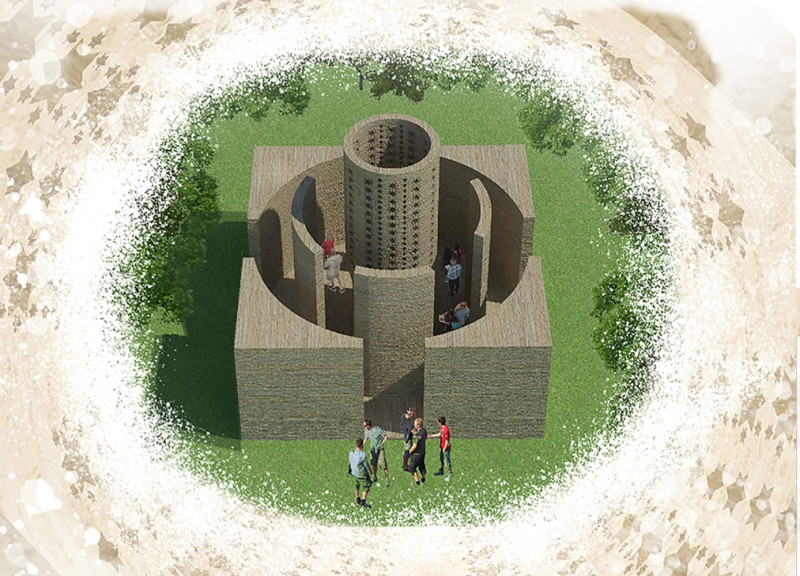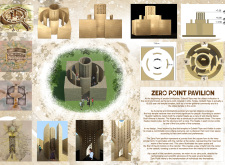5 key facts about this project
The Zero Point Pavilion stands as a modern interpretation rooted in the historical significance of Göbekli Tepe, located in Urfa, Turkey. This site is among the oldest known temple complexes and serves as a meaningful context for the pavilion. Designed as a space for reflection and self-discovery, the structure encourages visitors to connect with their inner peace. The concept revolves around a shift from a square form to a circular space, symbolizing the transition from outward experiences to deeper introspection.
Architectural Concept
The design strategy begins with a square layout that evolves into a central circular form. This movement reflects the journey towards the core, which signifies the innermost parts of the human experience. The cylindrical center acts as a focal point, inviting exploration and interaction with the structure itself and the ideas it represents. Visitors are guided through the space, encountering various perspectives that enhance their relationship with the environment.
Integration of Light
Light plays a vital role in shaping the spatial experience of the pavilion. Sunlight filters through the architecture, creating a shifting atmosphere that changes with the time of day. This dynamic interaction enriches the sensory experience, leading visitors through a thoughtful journey. Elements like the Star of David motifs on the cylinder not only contribute to the visual identity but also serve as points for spiritual reflection.
Material Considerations
Although the presentation does not specify materials, the design implies a preference for selections that resonate with the natural and historical backdrop of Göbekli Tepe. Using local and natural materials could elicit a sense of warmth and familiarity, complementing the goal of creating a comfortable space for introspection. This thoughtful consideration of materials aligns with the intention of encouraging a tranquil atmosphere for personal connection.
Spatial Dynamics
The Zero Point Pavilion presents a careful balance between the ancient heritage of Göbekli Tepe and its modern design. The crafted space not only honors the historical significance of the site but also engages visitors in a meaningful interaction with the architecture. The central cylinder, along with its surrounding forms, creates a flow that draws attention to the relationship between light and space. This design enriches the experience, making it both engaging and profound for those who enter.



















































